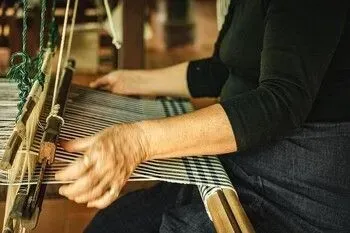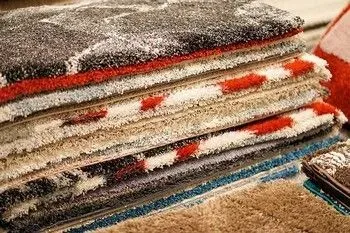Watch Out For The Natural Fibre Carpets
So what do natural fibre carpets mean to you?
And no…
I am not talking about the lawn.
I know that’s natural but you would not have it in your house would you?
So let’s get down to talking about natural carpets, shall we?
Natural Fibre Carpets For Your Bedroom
Did you know that natural fibres used with carpets are produced either by insects, animals, or even plants?
I know…
That’s something but not surprising.
We are talking about natural here are we not?
The fibres that are produced by insects or animals are known as protein fibres.

Those that are made by plants are known as vegetable fibres.
Vegetable and protein fibres share a common disadvantage.
That they are both very absorbent and will have extended drying times when wet cleaned – which can lead to mildew, shrinkage, and even dry rot.
Natural Wool Carpets
Wool fibre is produced from the fleece of lambs or sheep.
Wool carpet is imported from countries such as:
- England
- Australia
- New Zealand
And wool is the oldest and considered to be the finest of all carpet materials!
The ability of wool to stretch up to 40% of its original length and the fact that it can be bent back and forth more than 180,000 times without breaking makes it very resilient.
Wool is the most expensive material for carpet, although it is also
the best you can buy.

So I would think about getting it for your bedroom, but don’t go washing it in the winter as you can see…
It is not quick drying.
You do not want o go hopping around in the morning because you forgot about washing the wool carpet and put your warn cosy feet straight onto it in the Winter time…
Natural Silk Carpets
The fibre of silk is produced by the larva of various insects known as silkworms.
The silk, in continuous lengths from 300 to 1600 yards is spun to produce the cocoons.
As a fibre, silk is naturally non-flammable, strong, and not affected by static charge problems – even at low humidity.
Could this one internet you?
Natural Cellulose Fiber Carpets
This type of fibre is produced by plants and is normally not used as face yarns.
These types will, however, show up as backing materials of tufted as well
as carpets that have been woven.
Natural Cotton Carpets
Cotton is a vegetable seed fibre that is produced from the cotton plant that is also used in natural fibre carpets.
The primary use for this fibre is yarns woven in carpets or rugs. Cotton is otherwise resistant to alkaline solutions and becomes stronger when it is wet.
See also The Need To Know Natural Remedies For Bed Bugs
The biggest disadvantage to cotton is the fact that is the most absorbent of all fibres and requires extended drying times after being wet cleaned.
It is also easily damaged by acids, stains easily, mats down, soils quickly, and is subject to mildew, dry rot, and shrinkage.
Probably not the best choice for a bedroom if you are a bit of a, Well…
Grub.
Natural Jute Carpets
The fibre of jute is produced by the jute plant which grows in:
- Pakistan
- South America
- India
The stalk of the jute plant is where the longer coarse fibres are obtained, located between the outer bark and within the inner pulp.
Jute is normally used as weft yarns, across the width, in woven carpets and as a backing material in the construction of tufted carpets.

Jute is an inexpensive material that also serves other uses other than just carpet.
Like all other fibres, this one has its disadvantages as well.
The fibre is weak when it becomes wet and is also subject to dry rot, shrinkage, and mildew.
Natural Sisal Carpets
The fibre of sisal is produced by the leaves of the agave plant.
Sisal is very strong and primarily used for making:
- carpets
- rugs
- sacking
- rope
The fibre stains easily and is also very difficult to clean.
Wet cleaning can also cause shrinkage so it’s best to use low moisture methods.
Natural Rayon Carpets
There is quite a bit of confusion about rayon and it is easy to understand why.
Rayon is a synthetic fibre that is produced from natural cellulosic fibres of wood pulp or cotton.
The material is put through several chemical treatments which help to turn it into a synthetic fibre.
Primarily, rayon is used for area rugs because of its silk-like appearance.
It can be damaged by acids, has low resistance to abrasion and is also prone to cellulose browning.
Well…
We have about gone through all the natural fibre carpets when it comes to materials.
As you can see there are pros and cons to all of natural fibre carpets in some way or the other.

But remember that these materials are natural.
Not like the man-made fibres that often enough have such things in like plastic somewhere.
So being natural the water will seep in. Where plastic is not porous the carpets will dry quicker.
I guess it all depends on what you want in your bedroom.
